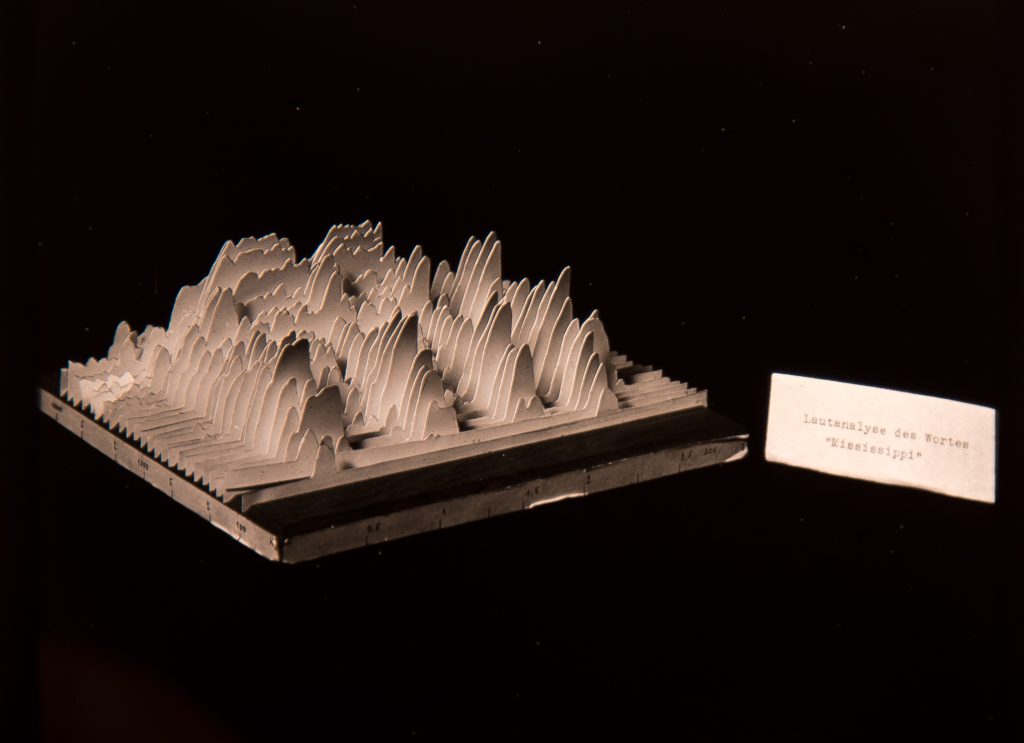Artefacts
Handmade paper waterfall plot: Mississippi
Handmade paper waterfall plot: Mississippi
This photograph shows a three-dimensional representation of sound using paper. The spectrum (frequencies from low to high) is represented by an arrangement of single strips of paper, with lower frequencies in the foreground. The changes in the spectrum over time are visible as variations in the profile of the paper strips, if read from left to right. Such paper models were used at the Technische Universität Berlin in the 1960s to represent the sounds of speech (phonetics) and music (acoustics). Here, the word “Mississippi” is shown, with its characteristic repeated alternation between the vowel [i] and the consonants [m], [s], and [p], with [s] visibly represented by an accumulation of high frequencies. The sound recording to be analyzed was filtered to include a very narrow band of the spectrum, and this signal was visualized on a strip of paper using a level recorder. Individual strips were then glued onto cardboard, cut out, and arranged in a row. This process was repeated for each band of the spectrum, resulting in a three-dimensional spectrogram.
The creation of these “waterfall plots” (Frequenzgebirge in German) is described in Musik…, verwandelt: Das Elektronische Studio der TU Berlin 1953–1995. A picture on page 99 of that book also shows a large waterfall plot made in a different way: the individual strips of paper represent spectra measured consecutively, not the variation of single bands.
© 2015 – 2025 Humboldt-Universität zu Berlin






